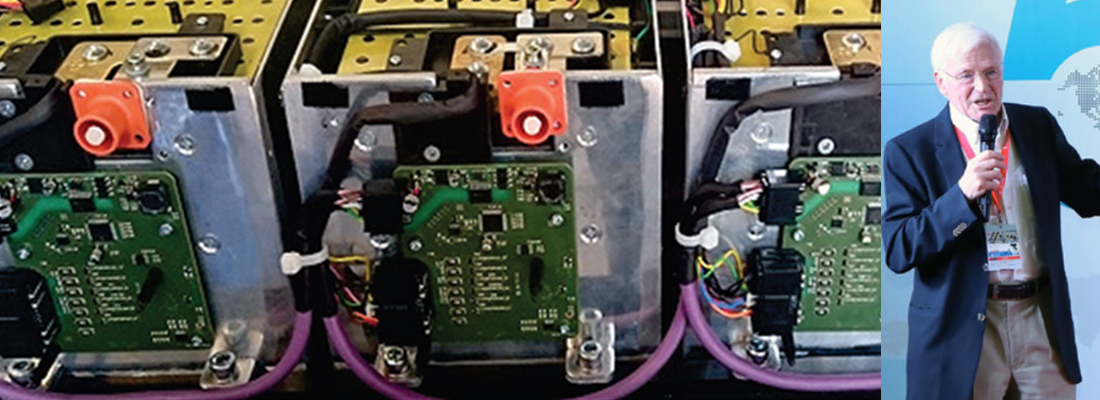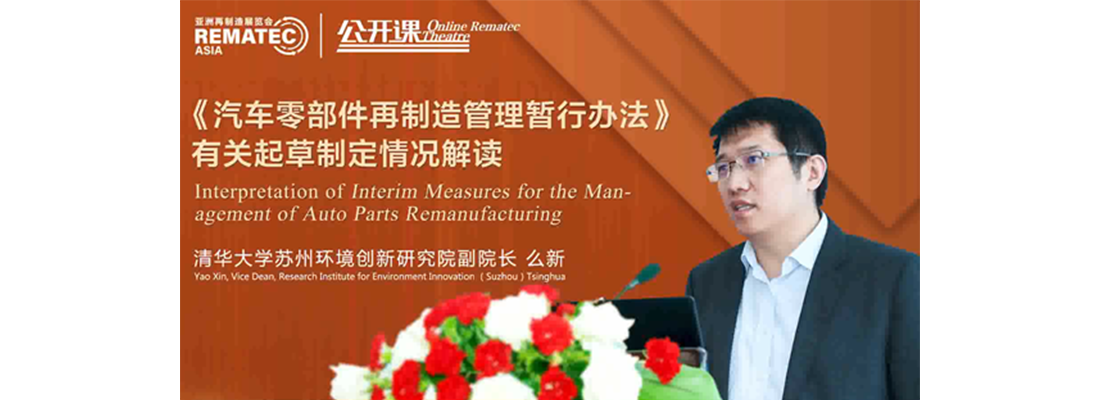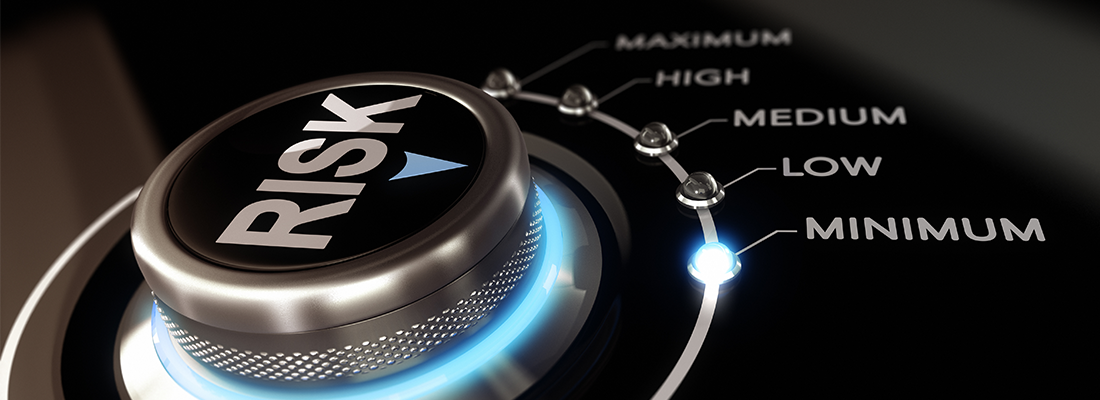Circular economy in the Automotive industry – part two
Monday, 17 March 2025
The circular economy in the automotive world is an approach that benefits both the environment—by reducing the replacement of damaged car parts, thereby significantly limiting the environmental impact caused by their disposal and utilizing recoverable parts through remanufacturing—and businesses and end customers, who face lower costs thanks to the possibility of reusing perfectly remanufactured parts, which are cheaper than original ones. The increasingly urgent need to reduce pollution from the entire automotive supply chain must take several factors into account: well-to-wheel emissions, reduction of waste disposal due to replacement parts, reduction of pollutants and CO2 emissions from exhaust gases, pollutant emissions from particulate matter released by brakes and tires, as well as a new approach to addressing the ecological transition, including the adoption of electric mobility.
Let us analyse some examples of how the circular economy combines with remanufacturing, not before having briefly remembered what is meant by remanufacturing.
When the BEVs reach the end of their driving lives, these batteries must be recycled or properly disposed of for reasons of both safety and sustainability. One of the many concerns about electric vehicles is what happens to the battery packs of EVs when they are depleted. What about those who weigh hundreds of pounds? Are they simply disposed of in landfills?
Many electric car batteries may be reused rather than recycled. When an EV battery pack has less than 70 to 75 percent of its original capacity, it is assumed to be at the end of its life. This goal may take ten years or more to achieve. Even if a quarter or more of their peak capacity has been lost, ageing battery packs still provide ample energy storage—20-to-90 kilowatt-hours, or up to three days' worth of electricity for the average home. It's long been assumed that a thriving "second use" industry would emerge to buy and repurpose used packs, extending their lives by 10 years or more.
Original Equipment Manufacturers (OEMs) and brake system companies are actively involved in studying and developing new solutions to manufacture brake systems that reduce pollution. Many among these companies are developing brake pads that do not contain copper, a common component in traditional pads that contributes to environmental pollution. These pads are made from ceramic fibres and other materials, producing less dust and being more eco-friendly. Brake pads and discs made from advanced composite materials can reduce wear and tear, leading to lower particulate emissions. The use of high-performance alloys in discs can enhance durability and reduce the generation of brake dust. Applying specialized coatings to brake components can reduce corrosion and wear, subsequently lowering particulate emissions. Techniques such as surface hardening can extend the lifespan of brake components and reduce the amount of material worn away during braking.
Simply replacing the tread that touches the road only accounts for a minor portion of the cost of a new tyre because the majority of the cost of new tyres is incurred by the tyre casing. Retread tyres cost between 30 and 50 percent less than equivalent new tyres while retaining about 90% of the tyres' "absolutely acceptable material." You can cut the price of a tyre by half to two-thirds between the immediate cost reduction and the life extension by retreading it once or more.
Let us analyse some examples of how the circular economy combines with remanufacturing, not before having briefly remembered what is meant by remanufacturing.
Remanufacturing of spare parts, it all starts here
The Automotive remanufacturing business proves to be the best way to put into practice what the circular economy is all about. When a component is damaged or at the end of its life, such as engine, transmission, battery, or powertrain components, instead of eliminating it and buying a new component, thanks to the art of remanufacturing, used parts have a second life. The remanufactured components are the same as new or even better because companies incorporate all the engineering upgrades in the new components. There is no difference compared to the genuine parts and it takes 80% less energy to remanufacture a component compared to that used to produce a genuine one, saving up to 30% in costs. Vehicle longevity has gradually been increasing, and the average age of vehicles on the road is now over seven years. This should provide an opportunity for the remanufacturing sector as a whole as it is likely that more spare parts will be required. From an environmental point of view, finally, products are salvaged through remanufacturing, and thus the materials and energy needed to produce products are saved to a large extent in comparison to other end-of-use options within the product life-cycle. One reason why remanufacturing is found attractive from an environmental point of view is that the efforts made when manufacturing new parts, e.g., material extraction, material manufacturing, part manufacturing, and product manufacturing, are fully or partly salvaged through remanufacturing.1. Are EV Batteries Recyclable?
Speaking of the circular economy, the automotive world, in embracing the electric transition, has facilitated the spread of electric vehicles, which are characterized by zero exhaust emissions. But what happens to the batteries when they are about to become unusable?When the BEVs reach the end of their driving lives, these batteries must be recycled or properly disposed of for reasons of both safety and sustainability. One of the many concerns about electric vehicles is what happens to the battery packs of EVs when they are depleted. What about those who weigh hundreds of pounds? Are they simply disposed of in landfills?
Many electric car batteries may be reused rather than recycled. When an EV battery pack has less than 70 to 75 percent of its original capacity, it is assumed to be at the end of its life. This goal may take ten years or more to achieve. Even if a quarter or more of their peak capacity has been lost, ageing battery packs still provide ample energy storage—20-to-90 kilowatt-hours, or up to three days' worth of electricity for the average home. It's long been assumed that a thriving "second use" industry would emerge to buy and repurpose used packs, extending their lives by 10 years or more.
The second life of Bevs battery
Although an older EV battery may no longer be suitable for long-distance driving, it may still have sufficient storage capacity to find a second life elsewhere. Blocks of old batteries, for example, could be used to relieve strain on the power grid by providing backup electricity when it is most needed. EV batteries are very hard to recycle, but some of their components, especially nickel and cobalt, are valuable enough to repay the investment. Instead of dumping the batteries, auto recyclers (formerly known as junkyards) send them to specialised companies that dismantle the packs and separate the various materials: wires, circuitry, plastics, and the actual cells. Crushing the cells and circuits separates and purifies the various metals contained within them, including nickel and lithium. Dealerships also dispose of used hybrid packs responsibly, relying on automakers' collection programmes, which send these batteries to the same recyclers for the same dismantling procedures. Certain parts are straightforward: steel, copper, and aluminium scrap metal typically enter the national metals-recycling stream. The EV battery recycling business, like all other forms of recycling, will be driven by which materials are most profitable to salvage. Metals such as nickel and cobalt are frequently used in lithium-ion batteries. These materials are expensive and are frequently mined in low-income countries under difficult conditions. Saving nickel and cobalt from old batteries could reduce the amount of nickel and cobalt that needs to be mined, particularly if recyclers deliver on claims that more than 95 percent of these materials can be salvaged. The valuable metals contained within used battery packs will almost certainly prevent them from being discarded. Battery demand is currently increasing as the world's largest car markets—China, North America, and Europe—continue to transition to EVs. And new mining takes a long time to establish, especially in countries with strict environmental regulations. Unlike liquid hydrocarbons, which lose their energy content when burned as petrol, an atom of cobalt remains an atom of cobalt regardless of how many batteries it has been in. As a result, end-of-life EV batteries provide a future source of those valuable metals, which have already been extracted from the ground and neatly packaged in a box.2. Circular economy and brake emissions, cutting-edge technology to reduce pollutants
The Euro 7 trilogue regulation aim to further reduce pollutant emissions from vehicles to improve air quality and public health, representing a significant step towards cleaner transportation in the EU, addressing both traditional exhaust emissions and newer concerns like non-exhaust particulate matter. The rule also concerns emissions due to the release of pollutants from braking systems, particles emissions (PM10). Brake emissions are an important aspect of vehicle pollution that requires ongoing attention from researchers, policymakers, and manufacturers to mitigate their impact on air quality and public health.Particulate Matter (PM)
Brake emissions primarily consist of particulate matter, including PM10 and PM2.5, which are particles less than 10 and 2.5 micrometres in diameter, respectively. These particles can penetrate deep into the respiratory system, posing health risks. Brake dust includes a mix of metals (such as iron, copper, and zinc), organic compounds, and other materials from the brake pad and disc wear. During braking, friction between the brake pads and discs generates heat and wear, producing brake dust. Urban driving with frequent stops and starts, as well as aggressive braking, can increase brake wear and emissions.OEMs and brake system companies
Developing brake pads with reduced metal content can decrease harmful brake dust. Used in electric and hybrid vehicles, this technology reduces reliance on mechanical brakes by converting kinetic energy into electrical energy during braking. Advanced materials that reduce wear and generate fewer emissions are being researched and developed.Original Equipment Manufacturers (OEMs) and brake system companies are actively involved in studying and developing new solutions to manufacture brake systems that reduce pollution. Many among these companies are developing brake pads that do not contain copper, a common component in traditional pads that contributes to environmental pollution. These pads are made from ceramic fibres and other materials, producing less dust and being more eco-friendly. Brake pads and discs made from advanced composite materials can reduce wear and tear, leading to lower particulate emissions. The use of high-performance alloys in discs can enhance durability and reduce the generation of brake dust. Applying specialized coatings to brake components can reduce corrosion and wear, subsequently lowering particulate emissions. Techniques such as surface hardening can extend the lifespan of brake components and reduce the amount of material worn away during braking.
Brake-by-wire system
Brake-by-wire system replace traditional hydraulic braking with electronic controls, potentially reducing brake wear and improving efficiency. Electromechanical systems can minimize the mechanical wear that generates particulate matter. Improved brake cooling systems can reduce the temperature of brake components, decreasing wear and the generation of particulate matter, as well as optimizing the design of brake components for better heat dissipation and reduced friction can lower emissions. OEMs and brake system companies often collaborate with research institutions, suppliers, and regulatory bodies to develop new technologies and materials. Many of them have internal innovation programs focused on sustainable mobility, which include projects aimed at reducing brake emissions. They conduct extensive testing of new brake materials and systems under real-world conditions to ensure they meet performance and emission reduction goals. Evaluating the environmental impact of brake systems throughout their lifecycle helps them identify and implement more sustainable solutions. Some of them engage in consumer education to promote awareness of the environmental impact of brake emissions and the benefits of new technologies.3. Retread tyres as a smart eco-friendly and economic opportunity
Retread tyres are significantly more eco-friendly than new tyres because they produce fewer carbon emissions during the retreading process than a new tyre would. Therefore, it is thought that the procedure is more fuel-efficient. This procedure involves replacing the worn-out tread coating with a new layer on top of a high-quality casing. Because it uses a smaller number of raw materials than is needed to make a new tyre, the technique is therefore viewed as being more environmentally friendly. Retreading tyres helps to cut down on tyre landfilling and scrapping. This not only assists businesses in reducing production costs, but it also provides overall improved environmental advantages.Modern technology opens a wide market
Retread tyres are now safer and more efficient than ever thanks to ongoing advancements in retread tools, procedures, and production techniques. Today's premium radial tyres are created with the possibility of retreading in mind. Fresh tread can be applied to intact casings in good condition at least once, and frequently numerous times. Simply put, the procedure entails stripping out worn-out tread pieces, mending any damage, resurfacing the tyre, and then applying a brand-new layer of tread to the casing. Retreading is such a successful method of managing truck and fleet tyres that, for instance, retreads make up over half of all replacement truck tyres in North America. Commercial tyres can start over and withstand all the same challenges as new tyres thanks to cutting-edge retread processes and tread patterns. Commercial fleet operators are seeking for solutions to cut fuel use as a result of the burdensome rules placed upon them. Therefore, environmental consciousness is leading the charge for reform in the car industry. Retread tyre sales will increase as a result in the upcoming years. Both independent service providers and original equipment manufacturers offer retread tyres. Independent service providers have cemented their dominance as the preferred sales channel in the market by finding that major vehicle fleet owners prefer to purchase retread tyres from them. A favourable climate for the sales of retread tyres has been generated by the expansion of the logistics sector and the increased need for freight transportation. The need for tyre retreading has grown as a result of the increased wear and tear on tyres. Fleet managers are seeking for ways to save expenses while keeping their fleet of vehicles safe and environmentally friendly. Retread tyres have been used by fleet owners to combat this issue, and many people are finding them to be helpful.A new vision of circular economy
The retread tyre becomes one of the key references for attaining the challenging sustainability targets that Europe has set for itself as part of the new vision it seeks for the green economy. Countries like France currently require public transportation fleets to regularly assess the use of retread tyres in this approach, and many other European nations are preparing themselves in a similar manner. Commercial retread tyres, as we've already seen, have the same appearance and functionality as brand-new tyres, but at a much-reduced price, with added advantages for the economy, the environment, and efficiency. The financial reduction for your fleet may be the most significant of the many advantages of retread tyres. A retread strategy can enhance your fleet's metrics like cost-per-kilometre, cost-per-load, and cost-per-vehicle, among others.Simply replacing the tread that touches the road only accounts for a minor portion of the cost of a new tyre because the majority of the cost of new tyres is incurred by the tyre casing. Retread tyres cost between 30 and 50 percent less than equivalent new tyres while retaining about 90% of the tyres' "absolutely acceptable material." You can cut the price of a tyre by half to two-thirds between the immediate cost reduction and the life extension by retreading it once or more.
The advantages of retread tyres
Tyres usually end up in landfills once they have served their purpose. However, the retread procedure helps tyre rubber last longer and avoids landfills for a longer period of time. Each retread tyre consumes around 60 fewer litres of oil and 30% less energy to produce than a new tyre, according to the NHTSA Commercial Medium Tyre Debris Study. Accordingly, the average retread tyre requires only 28 litres of oil to make, compared to up to 83 litres for a brand-new tyre. An annual average of almost 90,000 tons of truck tyre rubber can be polished by a tyre retread. Rubber may be recycled and given new life as rubber mulch, rubber mats, and playground surfaces, among other things. Retread tyres last as long as brand-new tyres, if not longer. The technique is better than ever. They function just like brand-new tyres but cost a fraction of the price. With the right care, quality retread work can increase your tyres' mileage to levels comparable to those of most brand-new tyres. According to some estimations, a retread can extend the life of your tyres by more than 800,000 kilometres when combined with regular preventive maintenance procedures and adequate inflation to prevent heat build-up.Share your remanufacturing stories with us
Do you have an innovation, research results or an other interesting topic you would like to share with the remanufacturing industry? The Rematec website and social media channels are a great platform to showcase your stories!
Please contact our Brand Marketing Manager.
Are you an Rematec exhibitor?
Make sure you add your latest press releases to your Company Profile in the Exhibitor Portal for free exposure.
Receive the best newsletter on remanufacturing - straight to your inbox!





